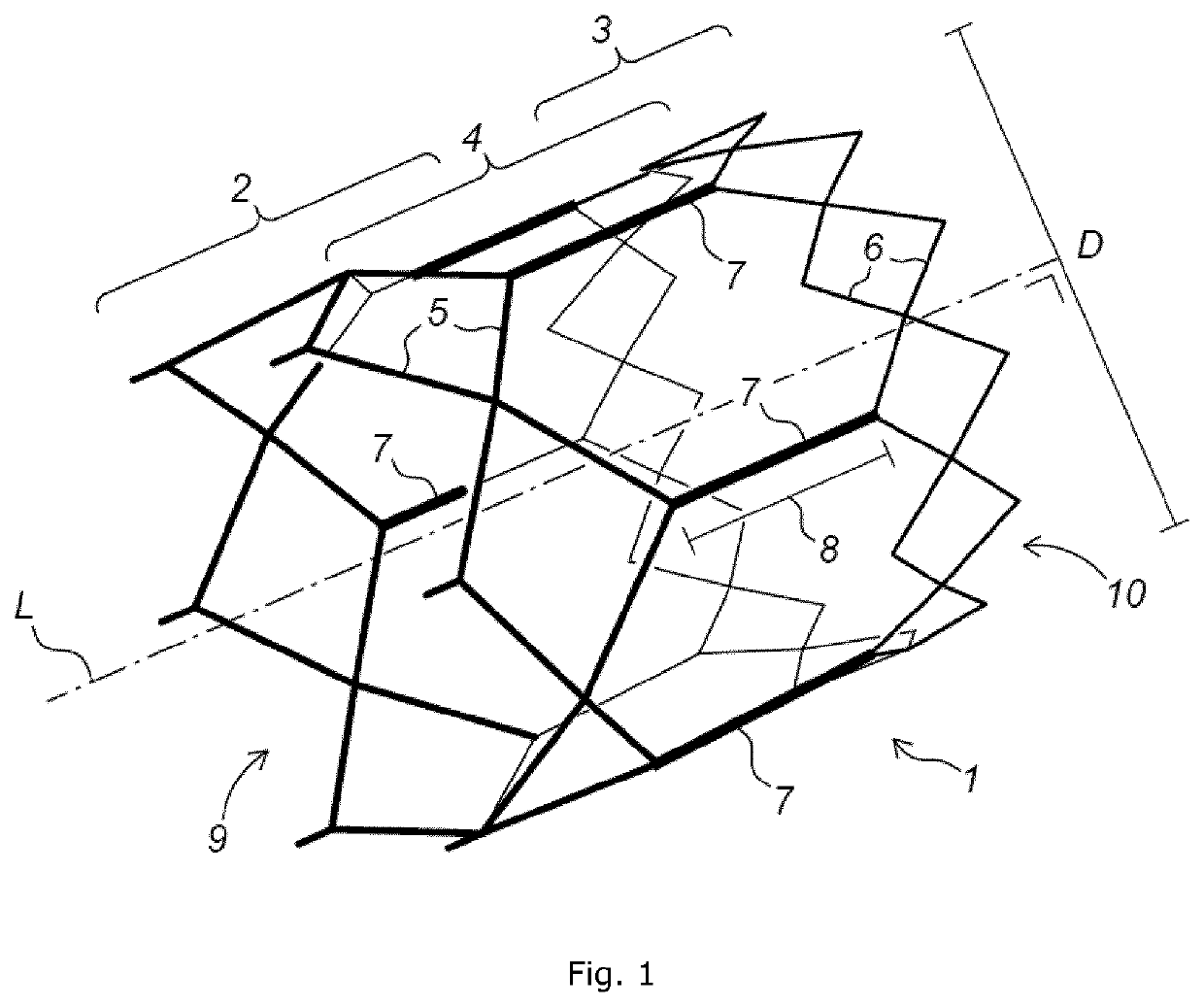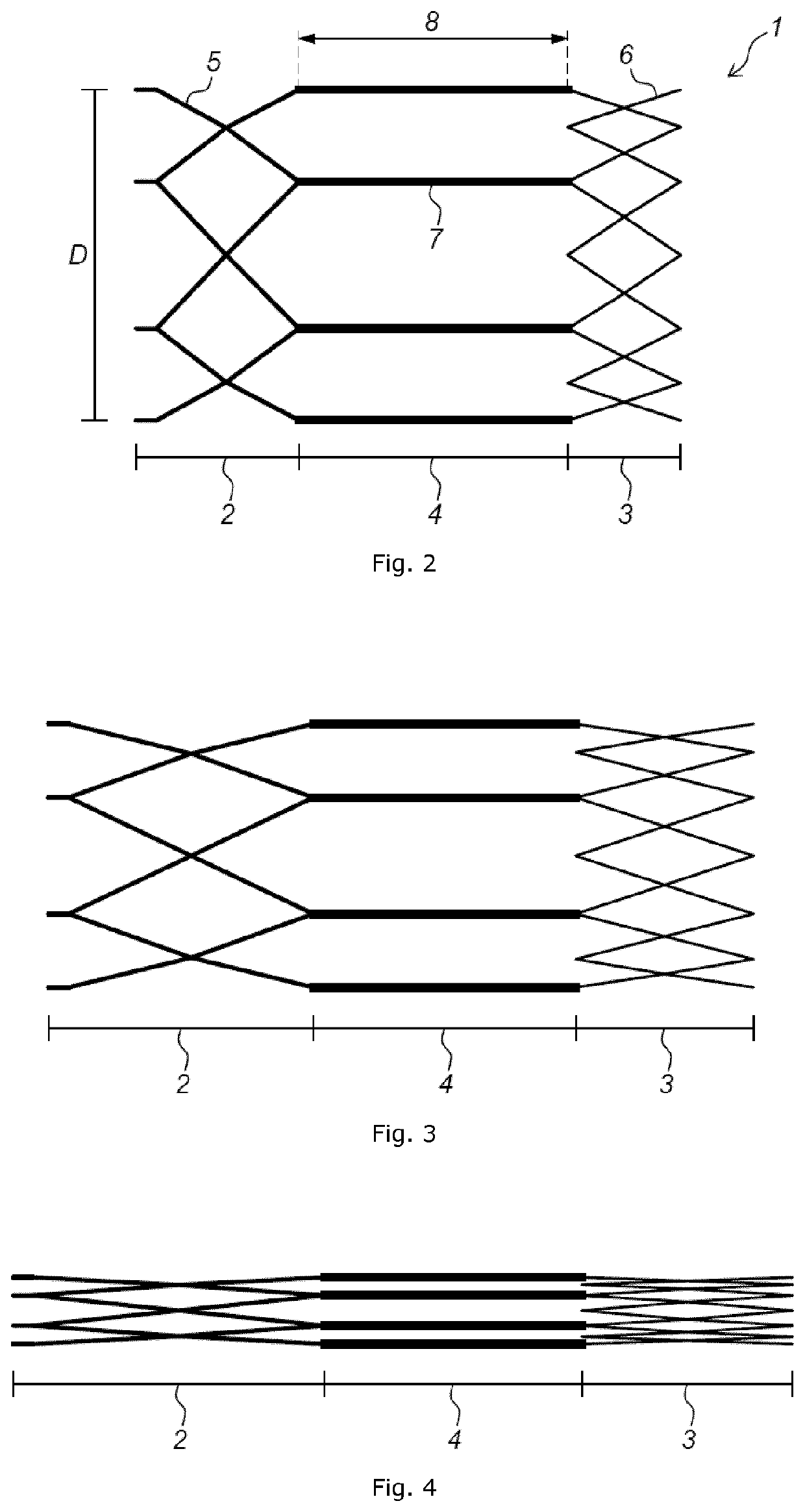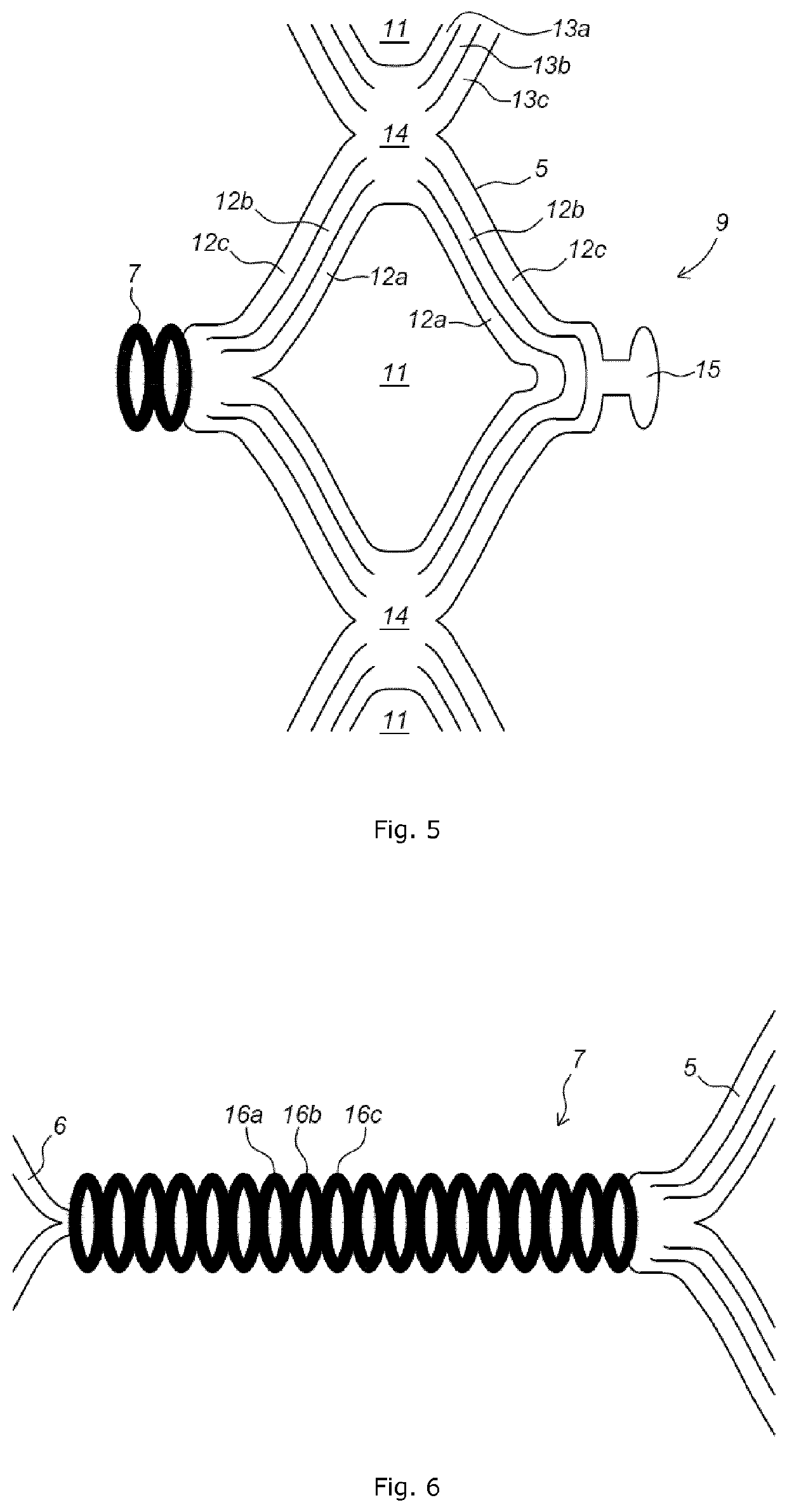Implant stent device
a stent and implanted technology, applied in the field of implanted devices, can solve the problems of increasing the burden on health care expenditure, affecting the pvi, and reducing the chance of recurrence, so as to increase the probability of recurren
- Summary
- Abstract
- Description
- Claims
- Application Information
AI Technical Summary
Benefits of technology
Problems solved by technology
Method used
Image
Examples
example 1
gs
[0087]In order to illustrate the system, devices and methods of the present invention, the techniques described herein were used on pigs, using a stent-based contactless energy transfer to isolate PVs in pigs.
[0088]Hereby, nitinol self-expanding implants were positioned in the pulmonary veins of pigs. Using electromagnetic wireless energy transfer principles, implants were heated in a controlled fashion. Using an electrophysiological sensing and pacing catheter, signals were checked before and after the ablation, and conduction block persistence acutely and after one month were checked. Eleven animals were successfully treated. Implantation and wireless energy transfer were safely performed in all animals. While pacing was successful in all animals prior to the ablation, conduction block was shown acutely in all eleven animals and chronically in seven animals. No periprocedural complications occurred, and the seven chronic animals remained in excellent shape until their sacrifice ...
example 2
gs, Further Trials
[0182]A further set of pig trials was conducted along similar lines as in the previous example for map the left atrium, implanting a dedicated nitinol-based self-expanding device, ablating the dedicated heating ring, remapping the left atrium after application of the ablation technology and evaluating acute histology.
[0183]In the procedure, the pigs are prepared and anesthetized. Catheterization is performed via a left intercostal incision.
[0184]During the procedure:[0185]one 6F sheath (to allow for the temperature optic sensors), one 8.5F Zurpaz (Boston Scientific) steerable guide or a 9F introducer, and one 6F sheath will be introduced into the left atrium;[0186]initial contrast fluid will be injected to image the left atrium and PV structure;[0187]a 10-pole stimulation or pacing catheter shall be positioned into the PV distal from the target ablation zone;[0188]signals in the PV will be measured;[0189]pacing will be performed at a fixed rate above the pigs basic...
PUM
 Login to View More
Login to View More Abstract
Description
Claims
Application Information
 Login to View More
Login to View More - R&D
- Intellectual Property
- Life Sciences
- Materials
- Tech Scout
- Unparalleled Data Quality
- Higher Quality Content
- 60% Fewer Hallucinations
Browse by: Latest US Patents, China's latest patents, Technical Efficacy Thesaurus, Application Domain, Technology Topic, Popular Technical Reports.
© 2025 PatSnap. All rights reserved.Legal|Privacy policy|Modern Slavery Act Transparency Statement|Sitemap|About US| Contact US: help@patsnap.com



